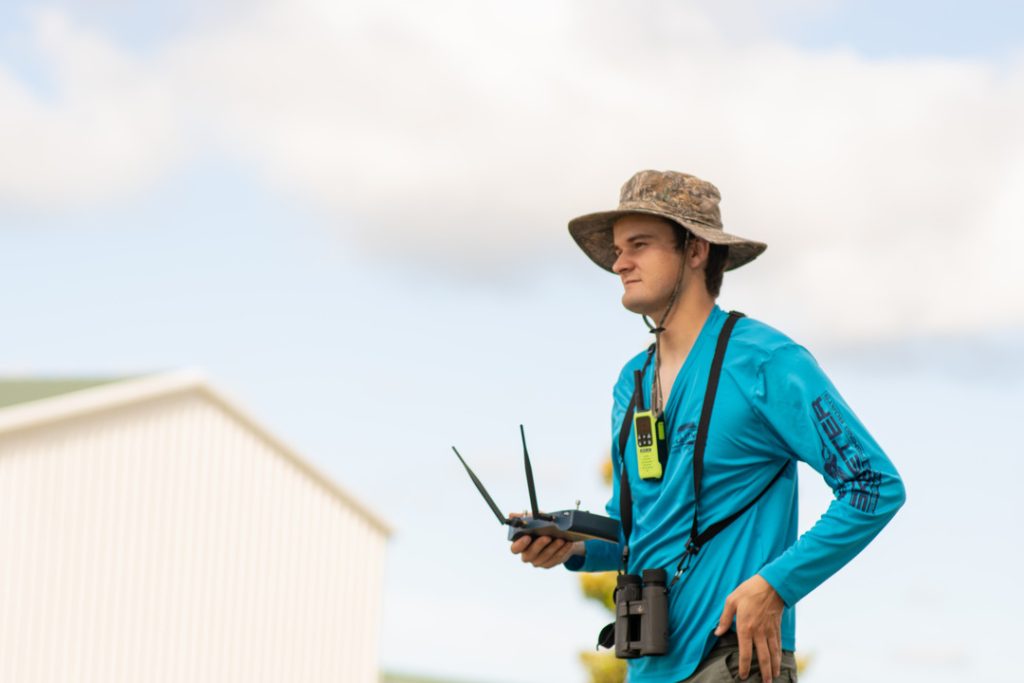Growing up along Florida’s coast, Jack Parker experienced several hurricanes that affected his family’s life. Two of these storms, Dennis in 2005 and Michael in 2018, caused a great amount of damage to his home, and led to several days without power followed by weeks of cleaning up. These experiences made Parker want to contribute to more resilient coasts and gain a better understanding of how natural forces shape them. Since 2018, Parker has been conducting drone missions to document hurricane damage for both homeowners and his local fire department.
Parker, a UF alumnus who holds a bachelor’s degree in mechanical engineering, grew up on the Gulf Coast of Florida just south of Tallahassee where he developed a curiosity for water and wetland exploration, and spent his high school years building and racing drones.

“I love doing it. I was never any good at it — always came in dead last or very close to it — but I had a lot of fun doing it. And I was always fascinated by building them,” said Parker.
His passion for this hobby and long held interest in water and wetlands led him to drone work in several salt marshes throughout the coast. Parker has been immersed in the world of multirotors — aircrafts with more than two rotors used for stability and control —since 2016, initially focusing on photography and building quadcopters, a type of multirotor with four rotors. Parker earned his commercial certificate to fly drones in August 2018. Since then, he has applied his expertise in various commercial ventures and research initiatives.
Working with Peter Ifju, Ph.D. professor in the Department of Mechanical and Aerospace Engineering, Parker has been involved in the lab as a pilot and research assistant, collecting data on beach dunes and salt marshes. He has also been assisting graduate student Katie Schoenberger from the Kaplan lab in measuring the vegetation and water flow rates in the Ichetucknee and Silver rivers.
Parkers says working in these environments requires perseverance and drive.
“If you’re in a wetland where you’re in a muddy, mucky environment, the entire time you’re fighting against the mud,” said Parker. “Carrying a drone worth $20,000 over mud where you’re really fighting to stay upright and not lose track of the drone — because that means losing the drone and the data that you went out there for — is very challenging.”
The chance to fly drones and support coastal health and safety motivates him every day in the field.
“It’s just endlessly fascinating. I am incredibly lucky to have turned two of my greatest passions into a career that I love,” said Parker.
—
By Josue Zuniga
